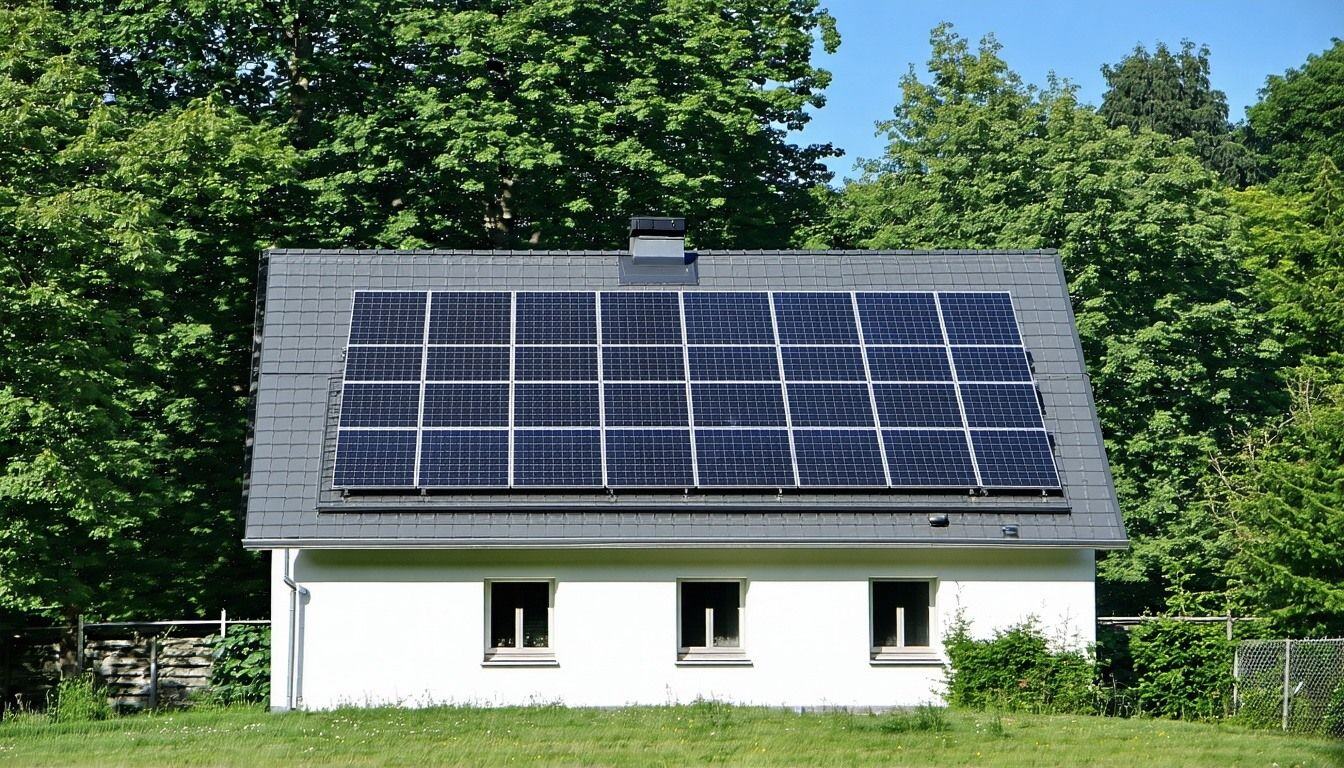4 Renewable Energy Options for Michigan Homeowners


If you want to lower your carbon footprint, choosing renewable energy for your home is a great way to start.
If you're a Michigan homeowner exploring green energy sources, you might be surprised by the variety of options available. As part of RetroFoam of Michigan's ongoing mission to educate homeowners, we've compiled this updated list of renewable energy options for your home.
From solar power and wind energy to biomass and hydroelectricity, let's explore Michigan's green energy solutions to help you make informed choices.
Renewable Energy Options for Michigan Homes
Some of these options might seem obvious for Michigan renewable energy sources, but others you might not have realized are right here in our backyard.
If you’re interested in these options, give your energy provider a call and see which renewable energy options they offer and how you can get signed up.
Here are the renewable energy options for homes – wind power, solar energy, biomass, and hydroelectricity.
Wind Power
Wind power is one of Michigan's leading renewable energy sources, generating around 69 percent of the state's renewable energy, according to a Crain's Detroit Business article.
You've probably noticed the giant wind turbines across Tuscola and Mason counties. Wind energy is entirely renewable, non-polluting, and doesn't produce harmful emissions. Michigan ranks among the top 15 states nationwide for wind energy generation, making it an excellent choice for homeowners interested in residential green energy, according to DTE.
Solar Energy
Solar power is increasingly popular among homeowners seeking renewable energy options.
Michigan has numerous community solar gardens, ideal for homeowners who don't have space or resources for individual solar panels.
Consumers Energy's SolarBlocks program allows customers to subscribe and offset their home's energy consumption. Each SolarBlock can offset up to 16 tons of carbon emissions over 25 years -- significantly lowering your environmental impact and potentially reducing your monthly energy bills.
Biomass Energy
Biomass energy is another renewable option that harnesses organic materials from plants and animals to create energy, according to the U.S. Energy Information Administration.
Plants absorb energy through photosynthesis, storing it until the biomass is burned or converted into biofuels or biogas. Common biomass sources include:
- Wood processing waste
- Agricultural crop residues
- Animal manure
- Food waste
- Yard and wood debris
Biomass provides homeowners with a sustainable method to repurpose organic waste into green energy sources.
Hydroelectricity
Michigan's vast water resources offer powerful opportunities for renewable energy.
Consumers Energy's Ludington Pumped Storage Plant harnesses water from the Great Lakes to generate significant clean energy.
This facility, among the largest worldwide, provides Michigan with renewable hydroelectric power. Following its recent upgrade, it can deliver over 2,000 megawatts -- enough to power a city seven times the size of Grand Rapids.
Making Your Home Energy Efficient
Selecting renewable energy sources for your home is a substantial step toward sustainability.
However, integrating residential green energy with energy efficiency practices further enhances your impact.
At RetroFoam of Michigan, we believe every day can be Earth Day. Explore practical tips in our article, "30 Tips to Go Green This Earth Day," to further reduce your home's environmental footprint.
Key Points
- Wind and solar are Michigan's leading renewable energy sources for homeowners.
- SolarBlocks from Consumers Energy provide accessible solar energy options for homeowners.
- Biomass converts organic waste into sustainable residential energy.
- Michigan's hydroelectric facilities significantly contribute to the state's renewable energy generation.
- Combining renewable energy with energy efficiency measures maximizes your home's sustainability.
Related Articles
9 Things to Do When You Have High Energy Bills
Energy Efficient Light Bulbs: A Bright Idea to Save Energy
About Amanda Ringler
Amanda previously has worked as a breaking news and crime reporter, TV news producer, and editor in Flint and Detroit. Throughout her career as a journalist, she has won several awards from The Society of Professional Journalists - Detroit Chapter and the Michigan Press Association. As part of the RetroFoam of Michigan family, Amanda uses her experience as a journalist to write content that will help educate homeowners on the benefits of foam insulation. When Amanda isn’t writing, she’s spending time with her husband and rescued huskies. She also loves knitting, making art, cooking, and hosting dinner and a movie night for friends and family.

.jpg)
